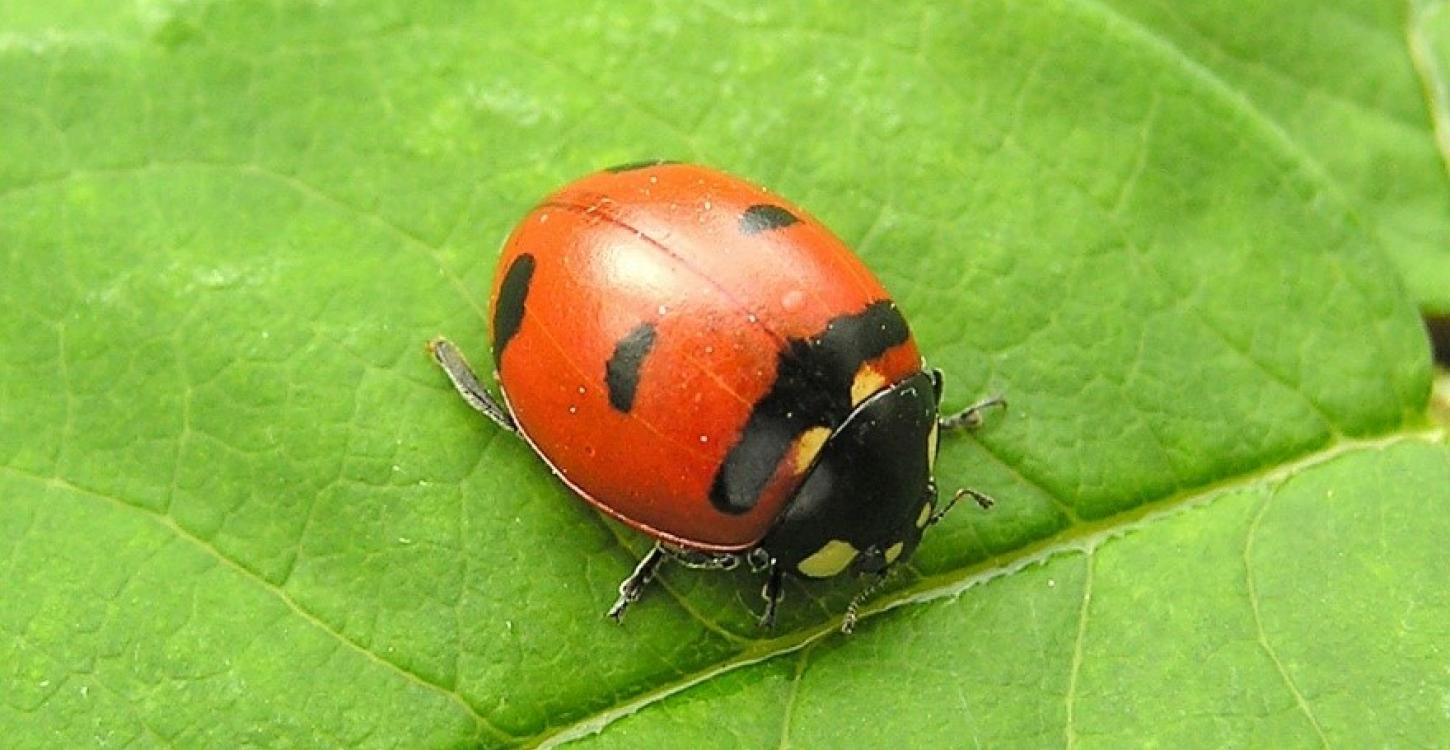
Transverse Lady Beetle. Photo credit: Henri Goulet via https://www.nwtspeciesatrisk.ca/species/transverse-lady-beetle
Species at Risk Highlight – Insect Edition: Transverse tehtsà dek'oa; tsı̨ı̨nę̀ (Lady Beetle)
July 26, 2021
The Transverse tehtsà dek'oa; tsı̨ı̨nę̀ (Lady Beetle) is a part of a species often called lady bugs or lady birds. There are many kinds of tehtsà dek'oa; tsı̨ı̨nę̀, including 32 native species in the NWT, as well as one non-native species. There are also three other species that are expected to be found here but have yet to be confirmed. This species of Lady Beetle is red to orange in colour, has a long band of black across the upper section of its body, and four black spots toward the back over its wing section. It also has a black head with several small pale sections.
The Transverse tehtsà dek'oa; tsı̨ı̨nę̀ was considered one of the most common species across Canada and was viewed as playing a vital role in the population control of aphids and other insects seen as pests for gardens and crops. Unfortunately, the populations have decreased substantially since 1986, and in many areas the population levels are very low, or completely absent. While the reason for the decline is not known, it is presumed non-natives species of lady beetles may play a role in the decline of native species in certain areas. Another factor may be the use of pesticides in many areas. Transverse tehtsà dek'oa; tsı̨ı̨nę̀ populations are healthiest in the NWT, Yukon, and British Columbia, which is likely due to fewer non-natives species being present. Currently, the Transverse tehtsà dek'oa; tsı̨ı̨nę̀ is assessed as Special Concern as of 2016 by the Canadian Species at Risk Act. It has not been assessed under the NWT Species at Risk Act.
For more information on tehtsà dek'oa; tsı̨ı̨nę̀ in the NWT, check out the GNWT’s Field Guide!